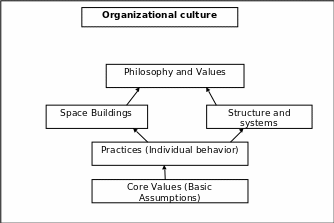Introduction
The importance of cultural strategy is of particular importance for any business and non-profit organization. Originally, the cultural aspects of the business performance shape the entire basis of customer care relations, thus, defining the attitude of the consumers, the target audience and the competitors towards the organization. In general, the cultural side of the business strategy is the defining aspect of the competitive capability.
The aim of this paper is to analyze the changes in the cultural approaches at Euro Disney in 1987 – 1994. The theoretic analysis of the case study will be aimed at defining the crucial moments of the cultural aspects in business performance.
Case Study Analysis
In accordance with the case study, the business performance of the Euro Disney corporation needed essential improvement. As it is stated on the case study, the revenues 15% decreased for the analyzed period, moreover, the annual amount of visitors lowered constantly, thus, the costs had to be 12% cut. All these caused the essential losses, and originated the strong necessity for immediate changes. As it is stated in the case study, Euro Disney had also made essential operational improvements:
Mr Bourguignon reported that it had cut queuing times by 45 percent during the year through new attractions and the redesign of existing ones; hotel occupancy rates had risen from 55 percent in the previous year to 60 percent; and managers were to be given greater incentives. The net result, claimed Bourguignon, was that the company would reach break-even during 1996. (Grant, 2002, p. 279)
The entire change in the cultural approaches provided the required changes in the customer care aspects of the business strategy, which caused the improved attitude of the visitors towards the company, and increased the loyalty of the target audience.
Theoretic Approach
Originally, the change of the corporate culture requires not only modification of the business strategy but also changes in the managers’ and employees’ behavior. This is a matter of extensive training. In general, training entails the development of communication skills, leadership and teamwork, required for closer cooperation within a team and for a better understanding of the product origins.
It should be emphasized that in 1984, the managerial practices of Disney Company presupposed a flatter managerial structure, and the business decisions were taken from the perspective of the company’s development in the European entertainment market. The criteria, which was applied for the managerial structure is the following:
- The flatter structure in order to provide the flatter decision-making processes
- Limited partnership
- Diversified responsibility allocation system for the proper management of various spheres of Disney Company (entertainment and accommodation)
Nevertheless, this system appeared to be ineffective without proper customer care policies and the necessity to change the cultural perspectives of the entire performance. Thus, the atmosphere had to be changed. In accordance with Arce (2006), the necessity and ability to influence the business performance of the company is closely associated with the commitment to teamwork and the orientation of the team for the achievements. Additionally, the effectiveness of the corporate culture depends on the environment within a team (Figure 1) As it is emphasized by Fairfield-Sonn (2001, p. 310):

Team members indicated that they felt empowered to make decisions, were collaborative in their relationship with others, and were motivated to high levels of performance after the corporate culture had changed. These features were shown in the extent to which they were enthusiastic, hardworking, outgoing, team, and customer-oriented. An unexpected finding, however, was the extent to which they were uncomfortable with ambiguity.
In the light of this statement, it should be emphasized that the Disney Company had to change the stated mission of the organization in order to achieve increased performance and improve the entire culture of the organization. Additionally, these changes, in order to be successful in the long term perspective require the implementation of a defensible strategy.
The strategy implemented by the Disney Company presupposed the resource-based view of the company’s performance, based on the matters of value in the eyes of the visitors and target audience, rareness and uniqueness of the offered services (including the impossibility to imitate the product and the services), and non-substitutability.
Considering the aspects of the global marketplace activity, it should be emphasized that the values of the rapid informational flow make it increasingly difficult to achieve the proper implementation of the traditional marketing four P’s, consequently, the company had to pay attention to the values of the corporate culture.
Conclusion
Originally, the Disney Company’s performance required essential changes in the matters of corporate culture and the entire business performance. The fact is that the implemented innovations were oriented at changing the team performance by training managers and employees to cooperate more effectively. Thus, the flatter structure, limited partnership in the managerial sphere and diversified responsibility allocation system were transformed into a more complex managerial structure with the inevitable consideration of the cultural aspects.
Reference List
Arce, D. G. (2006). Taking Corporate Culture Seriously: Group Effects in the Trust Game. Southern Economic Journal, 73(1), 27.
Fairfield-Sonn, J. W. (2001). Corporate Culture and the Quality Organization. Westport, CT: Quorum Books.
Grant, R. (2002) Euro Disney: From Dream to Nightmare, 1987–94. Contemporary Strategy Analysis. Fifth Edition.